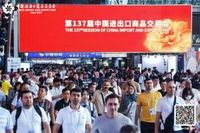Shanghai’s innovation scene is buzzing after a landmark achievement by SUS ENVIRONMENT, a Chinese environmental protection company that’s making waves far beyond its home turf. On September 17, 2025, the company’s project, “Key Technologies and Applications for Low-Carbon and Efficient Waste to Energy,” took home the First Prize in the Green Industry field at the BRICS Industrial Innovation Contest 2025, according to a report from PR Newswire. This isn’t just any accolade—it’s the company’s first international award in science and technology, and the only First Prize awarded in the Green Industry category this year. For Chinese environmental enterprises, it’s a new badge of honor on the global stage of solid waste management.
The BRICS Industrial Innovation Contest is known for spotlighting projects that push the boundaries of technology and sustainability. SUS ENVIRONMENT’s winning entry encompasses a suite of independently developed technologies, including clean incineration, efficient energy utilization, flue gas pollutant control, and low-carbon solutions. These aren’t just buzzwords; multiple academicians and experts have certified the project’s technologies as internationally leading. The competition’s judges were particularly impressed by the project’s breadth of application, both at home and abroad, and its clear potential for market growth.
What does this mean in practical terms? For starters, SUS ENVIRONMENT’s technologies have already been validated in a range of countries, including key BRICS partners like Brazil, as well as Indonesia, Malaysia, Vietnam, Thailand, and Uzbekistan. This isn’t just a theoretical win—it’s a real-world solution that’s already making a difference in diverse environments. According to the company, the technologies will now be included in the BRICS Industrial Innovation Cooperation Project Database, opening doors to further investment and one-on-one planning support from key financial institutions. It’s a big step forward for a company that’s been steadily expanding its global footprint.
To understand the scale of SUS ENVIRONMENT’s impact, consider these numbers: as of June 2025, the company has set up 11 management centers worldwide, providing environmental and energy services to over 100 million people. That’s not a typo—100 million. The company has invested in and constructed 90 waste-to-energy projects, often referred to as low-carbon eco-industrial parks, which together can process nearly 120,000 tons of municipal solid waste every single day. The annual green power generation from these projects is about 18,000 GWh. And it doesn’t stop there—their equipment and technology are used in 300 waste-to-energy plants around the globe, with a daily processing capacity of more than 300,000 tons. These figures, sourced from the Environmental Sanitation Net of China and public data, underscore the company’s leading position in the sector.
This milestone arrives at a time when China’s role in global trade and innovation is undergoing a dramatic transformation. The recently concluded 137th China Import and Export Fair—better known as the Canton Fair—offers a window into these shifting dynamics. Held in May 2025, the fair saw buyer attendance from Europe and the United States rise by 3.4%. But the real story was the surge in participation from emerging markets. According to PR Newswire, Belt and Road Initiative countries sent 187,450 buyers, a jump of 17.4%, while BRICS nations brought 72,417 buyers, marking a remarkable 24.1% increase. Attendance from RCEP member states also climbed by 6.9%, reaching 64,808 buyers.
These numbers aren’t just statistics—they reflect a broader rebalancing in the world economy. With persistent tariff pressures from the U.S. and lingering trade uncertainties, Chinese companies are recalibrating their strategies, shifting focus from traditional Western markets to developing economies. In the first half of 2025, China’s trade volume grew with over 190 countries and regions, and 61 of these partners recorded trade volumes exceeding 50 billion yuan, five more than the previous year. Trade with Belt and Road countries alone rose by 4.7%.
The Canton Fair, often described as a barometer of global trade, has become a vital platform for Chinese exporters to connect with new demand. At the 137th edition, the appetite for technology-intensive and high-value products was unmistakable. A Rwandan buyer, for instance, struck a deal for LED/LCD displays to support Africa’s ongoing digital transformation. Meanwhile, a Pakistani buyer, facing skyrocketing demand for energy-saving appliances at home, called the Canton Fair his top source for cost-effective, quality Chinese goods. These stories, highlighted by PR Newswire, illustrate how evolving market needs are prompting Chinese companies to roll out new technologies and premium products tailored to emerging markets.
What’s fueling this momentum? The Canton Fair’s unmatched product portfolio and global buyer network are part of the answer. The fair’s comprehensive offline supply chain connections help lower market entry barriers, while its growing digital trade infrastructure offers new avenues for cross-border investment. The event’s year-round online platform allows suppliers and buyers to interact seamlessly, regardless of time zone or geography. Thematic exhibitions, business matchmaking, and trade promotion programs further grease the wheels of international commerce.
Looking ahead, the 138th Canton Fair is set to open in October 2025, with expectations running high that it will build on the current momentum. As emerging markets continue to rise, the fair is poised to play an even greater role in advancing trade cooperation and fostering mutual benefit in a rapidly evolving global economy.
Meanwhile, back in the realm of environmental innovation, SUS ENVIRONMENT is gearing up for the next chapter. With its award-winning technologies now recognized at the highest levels, the company plans to leverage its independent core technologies and continue its efforts amid the wave of BRICS cooperation and global environmental protection initiatives. The goal? To provide scientific solid waste management solutions for more countries and to make low-carbon, clean energy a driving force for the world’s green transition.
For observers of China’s global trajectory, both the Canton Fair and SUS ENVIRONMENT’s recent honor signal a clear trend: Chinese enterprises are no longer just following global standards—they’re setting them. As the world grapples with the twin challenges of economic uncertainty and environmental crisis, these developments hint at a future where innovation, cooperation, and sustainability may just go hand in hand.
